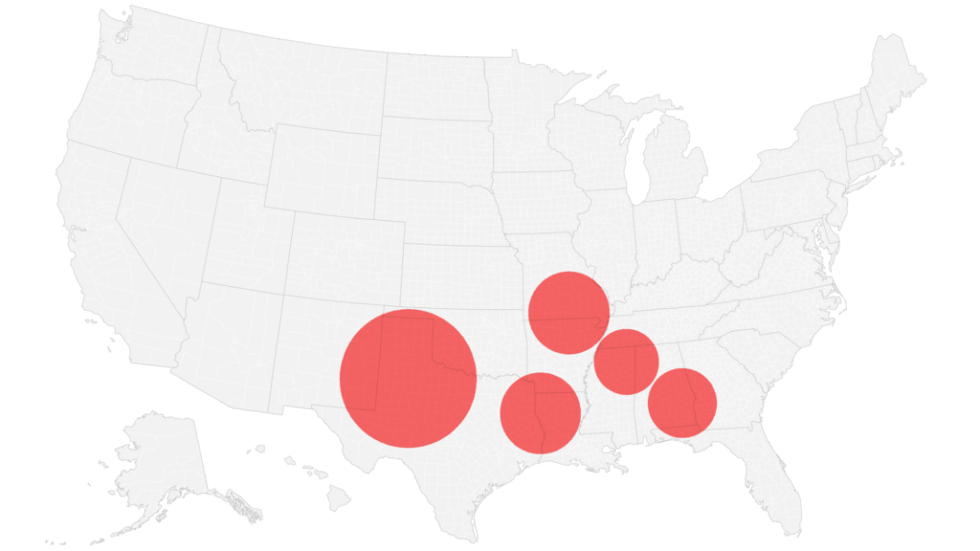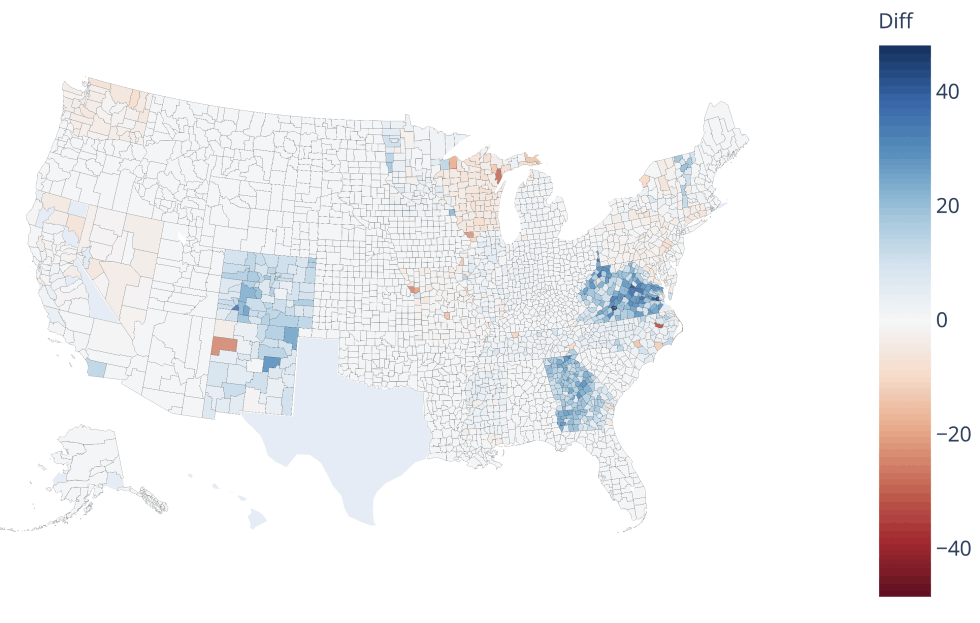What are the most vulnerable parts of the US vaccination landscape?
Goal: We aim to identify clusters of counties which have lower vaccination coverage than expected compared to the national average.
Methods: To detect clusters of low vaccination, we use the Kulldorff scan statistic (SaTScan). The analysis identifies candidate clusters centered at locations around the US, and having a maximum specified population size (of 1% of the total population size). For each of these candidates, the observed number of vaccination cases is compared to the expected number of cases (based on the national average). A candidate cluster is reported as a cluster if there are fewer observed cases than expected, and this outcome is likely to have not occurred by random chance. (The analysis is based on data available up to June 28, 2021).
Findings: The group of counties in each cluster (shown on the right) together have lower vaccination coverage than expected, and make up a large population size. All of the top five clusters are focused in the southeastern US. The locations in the clusters are smaller than the average US county: 92% of cluster counties have a population size of less than 100,000.


